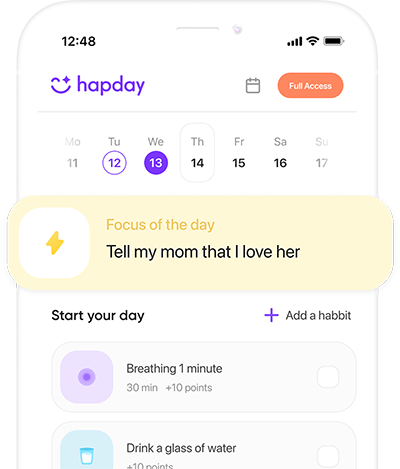In today’s world—especially for Gen Z and Millennial women—untangling the intricacies of platonic friendship and romantic love presents both a challenge and a necessity. As social landscapes shift, these relationship types each carry unique roles that enrich our lives in different ways. We delve into the differences and similarities between them, exploring how each contributes to a fulfilling existence.
Table of Contents
- The Essence of Platonic Friendship
- The Dynamics of Romantic Love
- Key Differences Between Platonic Friendship and Romantic Love
- Navigating Both Types of Relationships
- The Influence of Cultural and Social Factors
- Scientific Perspectives on Relationships
- Conclusion
The Essence of Platonic Friendship
Friendship without sexuality—what indeed is its allure? Platonic ties provide emotional refuge, companionship, and a sense of inclusion. Back in 2016, research in Social Psychological and Personality Science highlighted the increasing importance of friendships as traditional social systems morph and change (Apostolou et al., 2016).
Characteristics of Platonic Friendship
- Non-Sexual Nature: Crucially, platonic friendships exclude sexual interaction. This boundary creates a space driven by mutual admiration and care, devoid of romantic motives.
- Emotional Intimacy: Such friendships sparkle with emotional connectivity. Confessions of hopes, fears, and dreams find a haven here, often binding more resiliently than romantic ones.
- Support and Reliability: When life throws curveballs? Friends stand steadfast. In 2017, the American Sociological Review noted that adult friendships often surpass familial support during adversity (Umberson et al., 2017).
- Shared Interests and Activities: These bonds commonly spring from shared hobbies—be it art or hiking—baking connections that last.
Benefits of Platonic Friendships
Platonic connections significantly bolster mental and emotional fortitude. As Mayo Clinic conveyed in a 2020 report, strong friendships shave stress, boost self-esteem, and propel life satisfaction (Mayo Clinic Staff, 2020). They’re in our corner through thick and thin.
The Dynamics of Romantic Love
By contrast, romantic love spans a vast emotional terrain—physical attraction, mutual desire, and emotional union spring to life here, often nurturing enduring partnerships.
Characteristics of Romantic Love
- Physical Attraction and Sexual Desire: Such love is inseparable from bodily attraction and desire—elements absent in platonic ties—infusing emotional bonds with a one-of-a-kind intimacy.
- Emotional Depth and Commitment: The stakes often escalate here—hearts intertwine with a depth that nudges towards long-term commitment, as The Journal of Social and Personal Relationships pointed out (Hazan and Shaver, 1987).
- Shared Life Goals and Values: Successful romantic unions synchronize life goals. Future planning becomes a mutual endeavor.
- Intimacy and Vulnerability: Here, vulnerability reigns. Revealing fears and dreams fortifies both emotional and physical ties.
Benefits of Romantic Love
The psychological highs of loving companionship are notable. A Journal of Marriage and Family study suggested content romantic bonds lead to higher happiness and fulfillment levels (Carr and Springer, 2010). Such love, an antidote to stress, aids personal evolution through shared support.
Key Differences Between Platonic Friendship and Romantic Love
Understanding these distinctions assists in deftly maneuvering one’s emotional landscape.
Emotional Intimacy vs. Physical Intimacy
Though both boast emotional closeness, romantic love adds a physical aspect—from hand-holding to sex—that is absent in platonic forms.
Commitment Levels
Romantic relationships tend to demand deeper commitment compared to friendships. Plans mesh together, shaping shared futures—less so in friendships, which, while treasured, sidestep these weights.
Nature of Attachment
Platonic bonds offer a relaxed attachment style. Romantic ones, however, are intricate, blending attachment styles as outlined by Bowlby’s theory—secure, anxious, and avoidant play a part (Bowlby, 1988).
Social Perception and Expectations
Society often elevates romantic relationships over platonic ones, seeing them as markers of adulthood. Recently though, cultural tides are turning, as evidenced by friendship-centric media rising in prominence.
Navigating Both Types of Relationships
Make room for both friendships and romantic ties to craft a vibrant social life and enhanced well-being.
Setting Boundaries
Boundaries anchor both types—clear communication sets expectations and facilitates respect.
Communication
Healthy relationships thrive on open dialogue. Whether platonic or romantic, discussing feelings and boundaries curbs misunderstandings and nurtures closeness.
Balancing Time and Priorities
Striking a balance between friendships and romantic relationships is necessary for a wholesome social life. Dividing time wisely between the two enhances both connections.
Recognizing and Accepting Differences
Embrace the differences—acknowledge that each fulfills distinct emotional needs, enhancing appreciation for their unique offerings.
The Influence of Cultural and Social Factors
Culture shapes how platonic and romantic ties are seen and valued.
Media Representation
Media often glorifies romantic love as life’s pinnacle, overshadowing friendships. However, increased visibility of robust friendships in media reflects shifting societal values.
Changing Social Norms
With advancing society, relationship norms also evolve. Digital communication revolutionizes how relationships cultivate and endure.
Gender and Relationship Dynamics
Traditionally, gender roles dictated relational dynamics, but modern dialogues are challenging these norms, pushing for inclusivity.
Scientific Perspectives on Relationships
Scientific insight renders a deeper look into relationships.
Biological Factors
Brain research implies separate brain areas are activated by romantic love versus friendships. What fires up motivation and reward systems? Romantic love (Bartels and Zeki, 2000). Friendship, meanwhile, plays on empathy and social cognition (Vrticka et al., 2009).
Psychological Insights
The triangular theory of love by Sternberg suggests varying love components—intimacy, passion, commitment—to distinct types of relationships (Sternberg, 1986). Romantic love typically encapsulates all; platonic love focuses on intimacy.
Sociological Views
Both friendship and romance enhance social capital, cementing community and a sense of belonging (Putnam, 2000).
Conclusion
Platonic friendship and romantic love—pillars of a gratifying life. Discerning their distinctions enriches our relationship curation, seeing us give and receive needed support and connection. To dive deeper into nurturing meaningful relationships, explore resources like Hapday.

